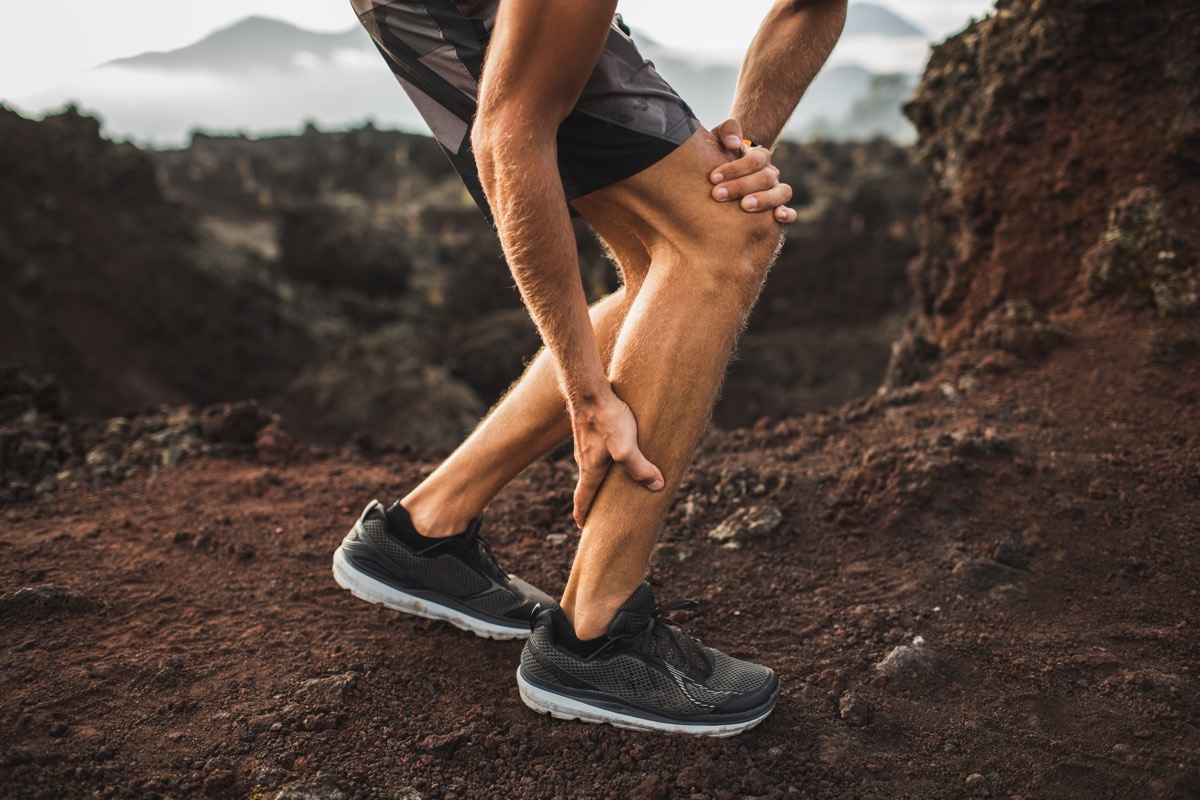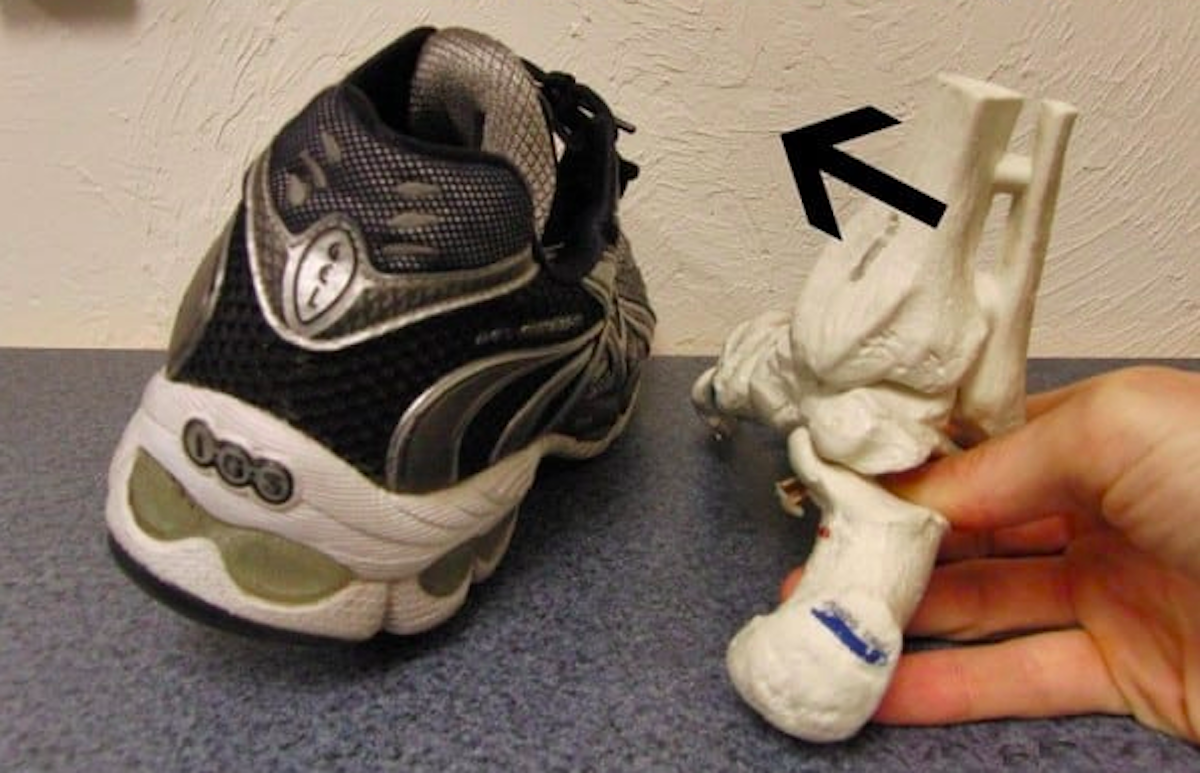 Achilles tendon pain is among the most stubborn conditions for runners to overcome, in large part because of the role it plays in how our bodies interact with the ground during running. As such, how we run plays a critical role in Achilles tendon integrity, and running inefficiency is the primary driver in Achilles injury and the perpetuation of chronic heel pain.
Achilles tendon pain is among the most stubborn conditions for runners to overcome, in large part because of the role it plays in how our bodies interact with the ground during running. As such, how we run plays a critical role in Achilles tendon integrity, and running inefficiency is the primary driver in Achilles injury and the perpetuation of chronic heel pain.
In this article, we’ll dive into stride-specific causes of Achilles pain and stride-efficiency strategies to avoid Achilles overload and get you back on your feet.
The Achilles Tendon: Our Biomechanical Keystone
The Achilles tendon might be considered the keystone soft tissue structure of our running biomechanical system. As the connective tissue extensor connection between the foot and leg, it is the primary energy conduit between our bodies and the ground.
When we impact the ground, we generate a force between two and four times our total body weight. The Achilles tendon and related soft tissues of the lower leg and foot actually store between 90 and 97% of that landing energy for a split second before releasing it behind us. Thus, the Achilles is the critical structure allowing forward and upward propulsion.
Like many running injuries, well-intended orthopedists frequently blame Achilles tendinopathy on the runner. It is considered an overuse injury and we are told, “You’re running too much and too fast!” Indeed, abnormal forces on normal tissue can cause strain, and the Achilles is susceptible to acute changes in tissue loading, such as rapid increases in running volume, intensity, or incline.
But how does overuse explain chronic Achilles tendon pain and stiffness amongst veteran runners logging consistent mileage and intensity? A potential answer is that how we run plays the biggest role in how we feel. Specifically, how we land on our foot and lower leg — and then how we pass over that stance leg — are the primary drivers of Achilles strain both acutely and chronically, over many miles and years.
Stride Factors in Achilles Tendon Pain
Here are the three stride issues that are the primary drivers in non-overuse, chronic Achilles tendon strain, stiffness, and pain:
1. Overstride Landing on the Forefoot
In the efficient state, the foot should land very close to beneath the body’s center of mass. When any part of the foot lands too far in front of the body, the magnitude of force absorbed by the leg increases. This is the primary driver of the vast majority of “overuse injuries” among runners.
Specific to the Achilles tendon, when we land in front of our body and on the front half of the foot, this results in excessive landing force that is concentrated in the calf muscle and Achilles.
2. Excessive Lateral Foot Striking
Efficient foot landing involves a small amount of supination-to-pronation motion. This means that the lateral aspect of the foot lands first, and then the foot gradually rolls inward as we pass over it.
Occasionally, runners will land in an excessively supinated and/or excessively narrow foot position. This places abnormal medial and lateral forces on the Achilles tendon and the attachment to the heel bone as well as the soft tissues above (in the calf and medial shin) and below (in the plantar fascia and foot musculature).
3. Deflating in Mid-Stance
This is a novel concept I have not seen discussed in running literature. When we land on the ground, the leg needs to stay consistently strong — maintaining a mostly straight alignment — as we pass over the leg and then push off.
If either the ankle or knee excessively bends between landing and pushoff, that can impart excessive eccentric stretch-stress on the lower leg soft tissue complex of the foot, Achilles, and calf with each stride.
I refer to this as “deflating” because that excessive ankle and knee flexion presents as a runner that is shorter, or more compressed in the leg, than their stronger, more stable counterpart that maintains a nearly straight leg in mid-stance.

From left to right are Galen Rupp, the author, and another runner. Both Rupp and the author demonstrate tall alignment, where the ankle and knee have only a small amount of flexion. Note the deflated runner to the right, with Achilles tendon and lower leg pain, exhibiting excessive ankle and knee flexion stretch-stress.
Any one of these stride inefficiencies can cause significant Achilles tendon strain. There are some runners out there who do all three in combination. For those runners, Achilles pain and functional limitation may be unavoidable.
Stride Strategies for a Happy Achilles Tendon
If how we run can cause Achilles pain, then the converse is also true: efficient running strategies can decrease strain, relieve pain, and get us back on the roads and trails. Here are three key strategies for working on your running stride for the purpose of reducing Achilles issues:
1. Foot-Under-Body Landing
The central theme of efficient running is that the foot needs to land nearly under the body.
Neutral posture and hip hinge alignment are crucial starting points for efficient foot strike. Body position facilitates the natural and lowest-effort efficient landing position of the foot and is far more important than any foot-specific strategy. Align your spine in neutral, then achieve forward position via a slight hip hinge and the foot will more naturally land beneath the body.
Occasionally, efficient foot strike needs enhanced strategies, especially if a runner habitually overreaches or under-flexes their hip. Two leg-specific strategies for enhanced foot-under-body landing include:
- Increasing upward leg lift. You do this via increased hip flexion where an upward lift creates a more compact, downward landing.
- Pulling the foot and leg beneath the body. Do this prior to landing, via the pawback mechanism.
2. Whole-Foot Landing in the Frontal Plane
Landing excessively on the lateral side of the foot has multiple causal factors, but over time, riding the outside of the foot can become an unconscious habit.
The strategy here is to land on the whole foot by engaging the first ray — the big toe and medial arch — during stance and pushoff. This may be difficult at first, but with practice, it will get easier.
3. Staying Tall During Mid-Stance
Avoiding the eccentric overstretch strain during mid-stance can be a challenge, but a bit of mindfulness and strategy can greatly improve stance stability and pushoff efficiency.
A hip-hinge alignment is a crucial starting point. This position facilitates an automatic stability response in the ankle and knee to stay strong as we pass over the stance leg. However, in many runners who chronically deflate, this stability response may be damped and the requisite strength depleted.
Two strategies to enhance stance stability and staying tall include:
- The pawback mechanism. A pull-through strategy helps maintain the straight-leg alignment in two ways. First, it decreases the landing forces that must be absorbed and controlled by the ankle and knee. Second, pawback increases torque production at the hip joint. Enhanced hip strength and stability enhances the knee and ankle strength and stability distally.
- Enhanced foot pushoff. An active engagement of the foot, through the first ray, helps keep the lower leg engaged. Because the gastrocnemius calf muscle both plantar flexes the ankle and extends the knee, increased mindfulness of foot pushoff behind will help limit joint flexion in the lower leg and avoid deflating.
Strength Strategies for Achilles Tendon Efficiency
In the advanced age of internet-based medical self-help, most athletes — and nearly all Achilles pain-afflicted runners — can name basic exercise-based treatment strategies for the Achilles tendon. The below three exercises focus specifically on developing the requisite strength to land efficiently and maintain lower-leg stability:
1. Runner Heel Raise
Runners are all about the eccentric heel raise. Why this exercise is effective for Achilles tendon pain relief may have a lot more to do with its effect on scar-tissue remodeling than actual strength.
What we are after is developing the requisite strength to maintain a tall position of the knee and ankle in mid-stance, as well as a strong foot pushoff behind. This Runner Heel Raise exercise specifically addresses those needs. Here is the foundational exercise with explanation, while this is an advanced single-leg version.
This favorite of mine emphasizes and reinforces several key stride efficiency concepts, including: posture, alignment (hip hinge, slight ankle, and knee flexion), as well as leg flexion and extension pattern strength.
Another key utility is whole-foot engagement and knee alignment. For those runners working on whole-foot landing, if you feel the knees bending inward or touching one another, use this exercise to practice balancing that medial arch loading with knee-over-second-toe alignment.
3. Single-Leg Hopping
Once alignment and lower-leg position are achieved, the ultimate stress testing is single-leg hopping. Again, the major emphasis here is plyometric loading of the stance leg complex in the efficient body position while maintaining the tall leg position.
Repetitive hopping on one leg exceeds the demands of easy running. Doing so while maintaining efficient posture and a tall knee and ankle in this exercise will ensure that you can also do so on the run.
Conclusion
When conventional treatment strategies continually fail, stubborn chronic pain and injury often feel disempowering. Achilles tendon pain is yet another situation where you have control. Recognizing and correcting stride-specific stressors can quickly relieve even the most stubborn and seemingly intractable heel pain.
Try these strategies to self-assess your stride, and make active changes to improve how you land, stand, and push off your lower leg. In doing so, you may be able to finally put Achilles pain in the rearview mirror.
Call for Comments
- Have you had Achilles tendon pain?
- What exercises have helped you to reduce it? Have you tried any of the exercises here?


